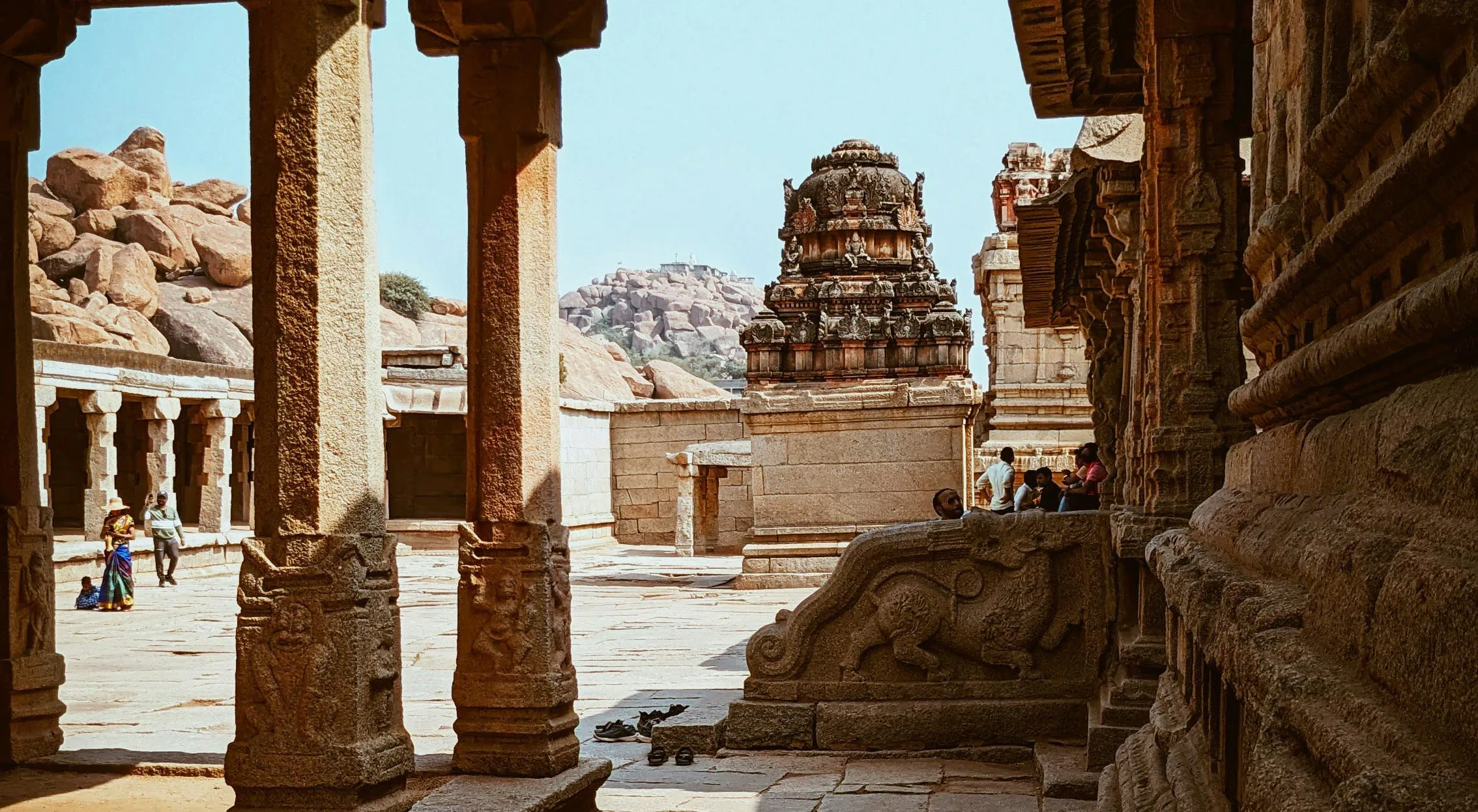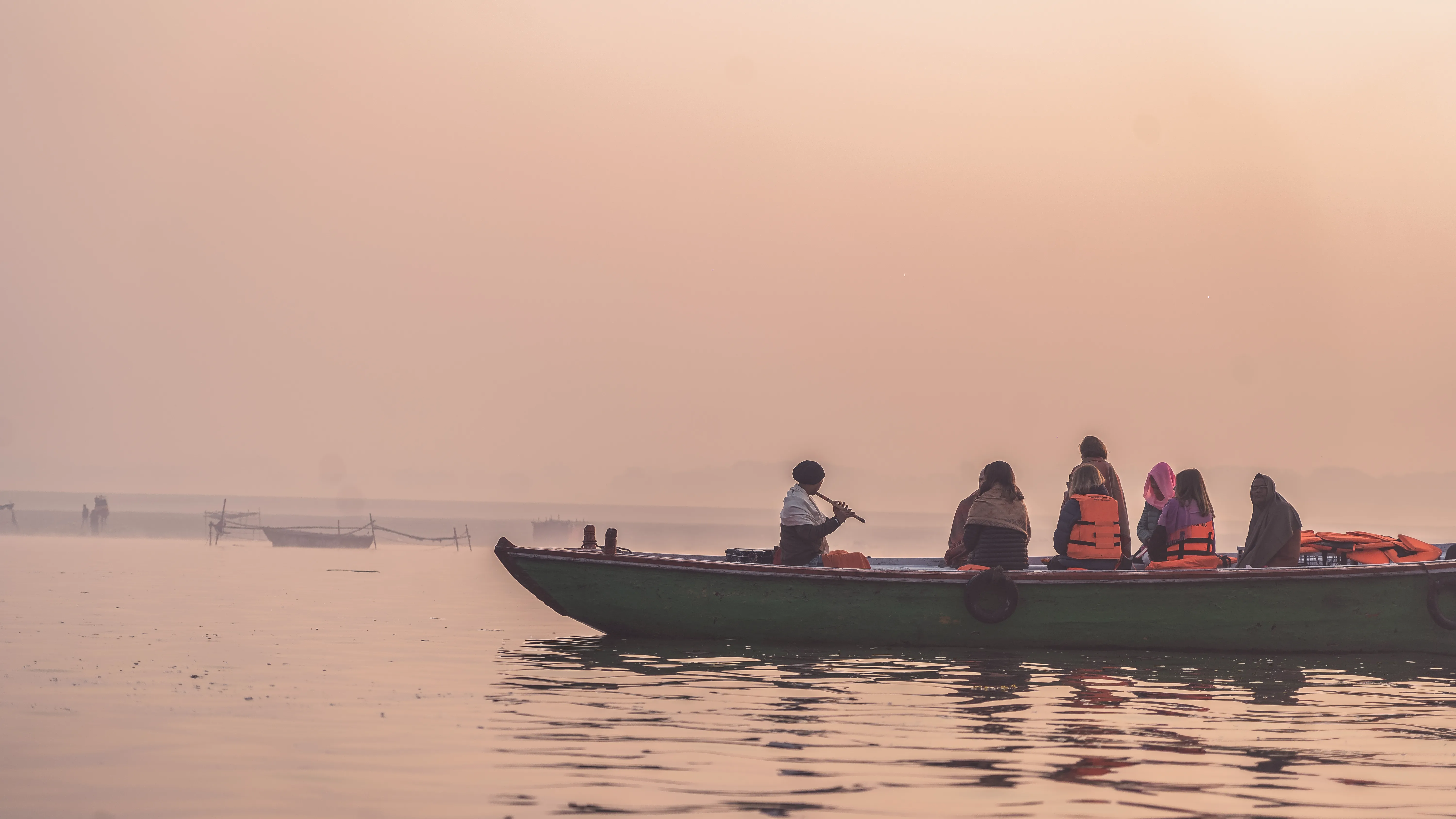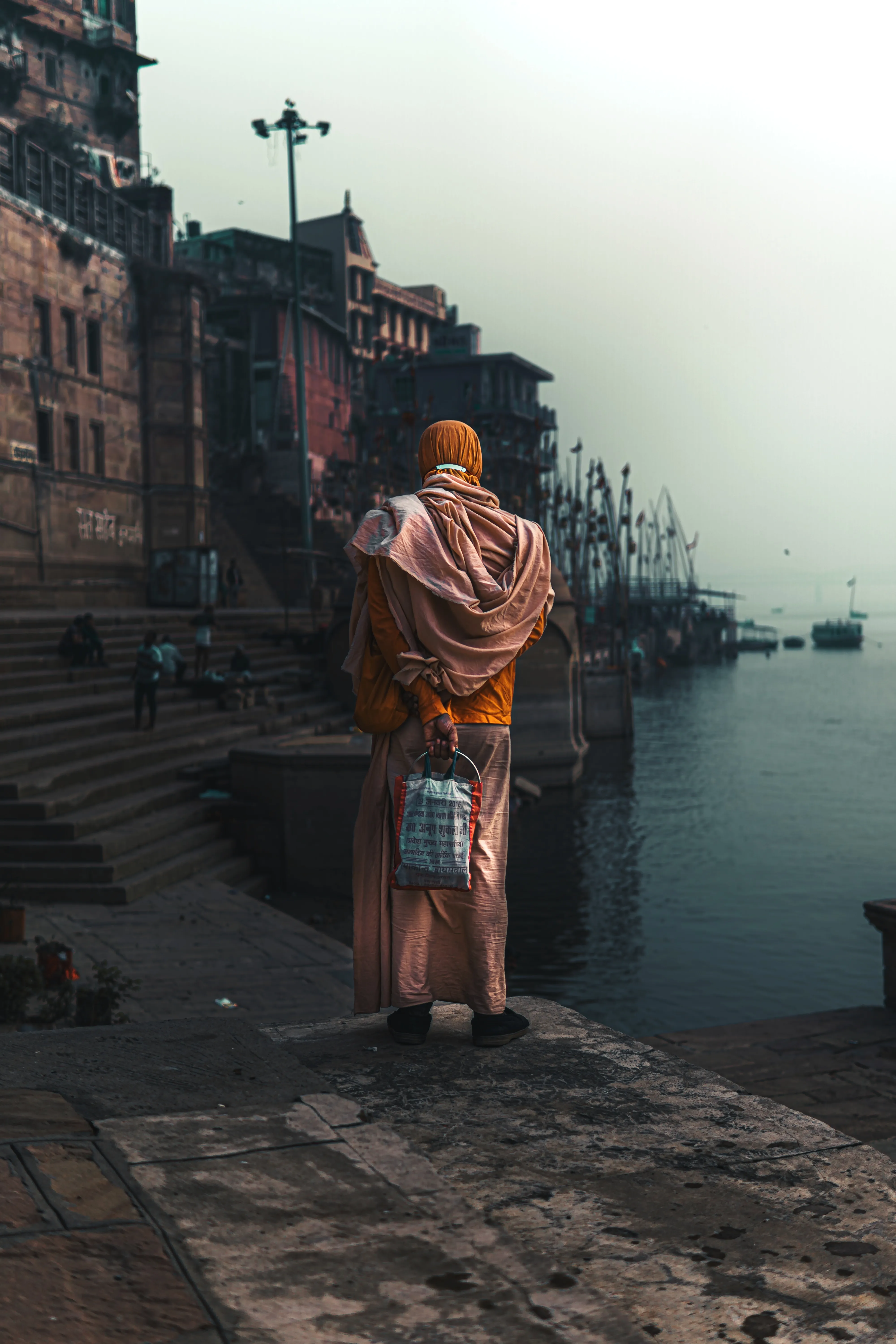Long ago, Hampi thrived in regal glory, its streets echoing with life and faith. Today, only silent boulders and crumbling temples remain, whispering tales of a forgotten time.
Over 500 years ago, the city was the proud heart of the Vijayanagara Empire, a kingdom so powerful that foreign travellers described it in awe. Merchants from Persia and Portugal, and chroniclers from Arabia and Italy, all told of a city larger than Rome, wealthier than any in India. Gold traded in its markets, music echoed from its temples, and its kings ruled with wisdom and splendour.
Set on the banks of the Tungabhadra River, Hampi shimmered like a mirage in stone. Towering gopurams rose into the sky, carved with gods, warriors, and celestial beings. At the Virupaksha Temple, worship never ceased. Just beyond, the Vitthala Temple stood as a masterpiece, with its musical pillars that sang when touched, and the Garuda Stone Chariot, a marvel carved from granite yet appearing as if ready to roll into battle. In 1565, Hampi fell to a coalition of Deccan Sultanates in the fateful Battle of Talikota. The victorious armies plundered and burned the city for six long months. Temples were desecrated, palaces turned to dust. The echoes of bells, chants, and laughter fell silent. The empire crumbled, and Hampi was left to time and the winds.

Centuries passed. But Hampi was never truly forgotten. Today, as the sun rises over Matanga Hill, it lights up more than 1,600 surviving monuments - forts, shrines, royal enclosures, water tanks, and temple ruins scattered across the land. The silence now carries whispers of the past. The wind, winding through pillared mandapas, seems to hum ancient hymns. As a traveller, you’re invited to step into the echoes of Hampi’s lost glory, walk through time, trace your fingers along the stone-carved gods and queens, stand where kings once stood, and listen. For if you listen closely, Hampi still speaks.
It tells the story of a city born of stone and spirit, of an empire that dreamed grand and fell hard, and of a legacy that still lives in every broken column, in every festival, in every heart that finds its way to this forgotten but never lost empire.


